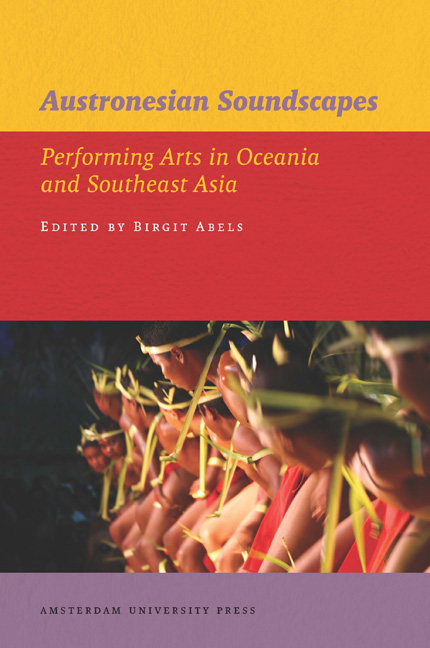Introduction
Published online by Cambridge University Press: 20 January 2021
Summary
In contemporary academic mappings of musical cultures, the term ‘Austronesia’ is far from common currency. It does not seem particularly handy at first glance: The area where people who speak Austronesian languages live covers a huge amount of the globe's surface from Madagascar to Rapa Nui, making it a seemingly elusive category of reference. Conventionally divided into Taiwan, the Malay Archipelago, Oceania, and Madagascar, Austronesia comprises a huge number of diverse cultural traditions, bound together by their affiliation with the Austronesian expansion and language family, and a shared ancestry. This has restricted the usage of the word mostly to linguistics and archaeology. In light of the gargantuan size of the area covered and the sheer multitude of cultural practices practised here, music and dance researchers too often tend to dismiss the term as a construct that seems of little use in academic research. Oceania and Southeast Asia, the two concepts this book carries in its subtitle, are more common categories of thinking in the study of the performing arts, but here too, related concerns apply. And there are valid reasons why this is so – for if one considers Austronesia, Oceania, or Southeast Asia to be mere ‘geographical drawers’, bounded by space and defined by borders, as a cartographic given and a ‘geographical canvas’ (Subrahmanyam 1997: 743), then their value to performing arts research is limited indeed.
Constructs
Polynesia, Melanesia, Micronesia, Oceania, Nusantara, Southeast Asia, Austronesia. All of these terms and several more were constructed between the 18th and 20th centuries. Some were to last until the present day while others were, for various reasons, not.
While ‘Polynesia’ had already been used by Charles de Brosses in the mid-17th century to refer to the islands in the Pacific basin plus the Philippines, Taiwan and Indonesia, it was in 1832 that the Frenchman Dumont D’Urville proposed the still-prevalent distinction between Polynesia (the ‘many islands’), Melanesia (the ‘black islands’), and Micronesia (the ‘small islands’) (Dumont d’Urville 1832). This geographical division of Oceania, a term the coinage of which is also accredited to D’Urville, was based on various European powers’ claims to territory and then-accepted notions of racial classification.
- Type
- Chapter
- Information
- Austronesian SoundscapesPerforming Arts in Oceania and Southeast Asia, pp. 15 - 22Publisher: Amsterdam University PressPrint publication year: 2012



